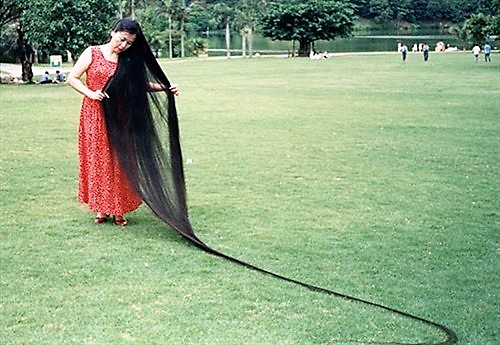Ugliness and beauty are pure human expressible concepts. Some believe the blowfish is the ugliest creature on earth but our ancestors never saw one probably because we didn’t find an ancient name for it but we can tell you what was the origin of ugliness and beauty.
At the end of our post on “nest” https://plus.google.com/100191404216524196296/posts/bJMGwQnudXb
we said that the the linguistic cluster *ʻš/*šʻ gave us two expressible human concepts: šʻr > ‘shuoor’ “feeling”, and bšʻ “ugly”. ‘Feelings’ need an introduction to place it in its proper context so we will prepare a special post for it because the origin of the concept is simply amazing if only because ‘feelings’ and ‘poetry’ are two meanings of a single word, so that means the invention of poetry was specifically to express feeling such as love .
Bšʻ is coined by placing ‘b’ in front of the root ‘šʻ ‘. Unusually, the only meaning for the word is “ugly”. However, the root (šʻ) has several meanings, which is normal because it is a category or a container of meanings. One of them is “beam, ray” as in “beam (rays) of light, sun, moon, etc.”.
A beam of light is only visible if part of the light is scattered by objects: tiny particles like dust, water droplets (mist, fog, rain), hail, snow, or smoke, or larger objects such as birds. If there are many objects in the light path, then it appears as a continuous beam, but if there are only a few objects, then the light is visible as a few individual bright points. In any case, this scattering of light from a beam, and the resultant visibility of a light beam from the side, is known as the Tyndall effect.
It is the scattering of light from a beam that was noticed by our ancestors. The scattering of moon light was considered beautiful, the scattering of human hair was considered the ugliest thing in their world hence the name the coined for it “šʻ”.
The problem was that they didn’t have any proper tools they can use to cut hair so it just grew and grew for a life time. If you look at Assyrian statues and wall engravings you’ll say every man had a beard, and they had a huge very advanced empire. People had to wait for the iron age to make blades sharp enough for cutting hair.
The origin of beauty is simple but very comprehensive. A girl was not described as “beautiful” because she has a pretty face or nice body or sweet smiles but all these and every other element of beauty. The word for beautiful is “gameel” (m.) or “gameela” (f.). It is from the root *GM “many, several, much, too much”. Northern Arabic has a soft ‘g’ or ‘j’ but Egyptians and Yemenis and other Arabs use ‘g’ because the letter is in Yemeni alphabet.
We were a bit naughty so we omitted mentioning another meaning for the root šʻ that produced a personal noun. Clue? We Googled the name and got this: About 625,000,000 results.
At the end of our post on “nest” https://plus.google.com/100191404216524196296/posts/bJMGwQnudXb
we said that the the linguistic cluster *ʻš/*šʻ gave us two expressible human concepts: šʻr > ‘shuoor’ “feeling”, and bšʻ “ugly”. ‘Feelings’ need an introduction to place it in its proper context so we will prepare a special post for it because the origin of the concept is simply amazing if only because ‘feelings’ and ‘poetry’ are two meanings of a single word, so that means the invention of poetry was specifically to express feeling such as love .
Bšʻ is coined by placing ‘b’ in front of the root ‘šʻ ‘. Unusually, the only meaning for the word is “ugly”. However, the root (šʻ) has several meanings, which is normal because it is a category or a container of meanings. One of them is “beam, ray” as in “beam (rays) of light, sun, moon, etc.”.
A beam of light is only visible if part of the light is scattered by objects: tiny particles like dust, water droplets (mist, fog, rain), hail, snow, or smoke, or larger objects such as birds. If there are many objects in the light path, then it appears as a continuous beam, but if there are only a few objects, then the light is visible as a few individual bright points. In any case, this scattering of light from a beam, and the resultant visibility of a light beam from the side, is known as the Tyndall effect.
It is the scattering of light from a beam that was noticed by our ancestors. The scattering of moon light was considered beautiful, the scattering of human hair was considered the ugliest thing in their world hence the name the coined for it “šʻ”.
The problem was that they didn’t have any proper tools they can use to cut hair so it just grew and grew for a life time. If you look at Assyrian statues and wall engravings you’ll say every man had a beard, and they had a huge very advanced empire. People had to wait for the iron age to make blades sharp enough for cutting hair.
The origin of beauty is simple but very comprehensive. A girl was not described as “beautiful” because she has a pretty face or nice body or sweet smiles but all these and every other element of beauty. The word for beautiful is “gameel” (m.) or “gameela” (f.). It is from the root *GM “many, several, much, too much”. Northern Arabic has a soft ‘g’ or ‘j’ but Egyptians and Yemenis and other Arabs use ‘g’ because the letter is in Yemeni alphabet.
We were a bit naughty so we omitted mentioning another meaning for the root šʻ that produced a personal noun. Clue? We Googled the name and got this: About 625,000,000 results.
Bishtawi is author of Origins of “Semitic” Languages, Origin of Arabic Numerals and Natural Foundations of Arabian Civilisation: Origins of alphabets, numeration, numerals, measurements and money.
http://www.amazon.com/Origin-Semitic-Languages-Arabic-Edition/dp/148179888X
(Visited 6 times, 1 visits today)
Last modified: May 31, 2023



